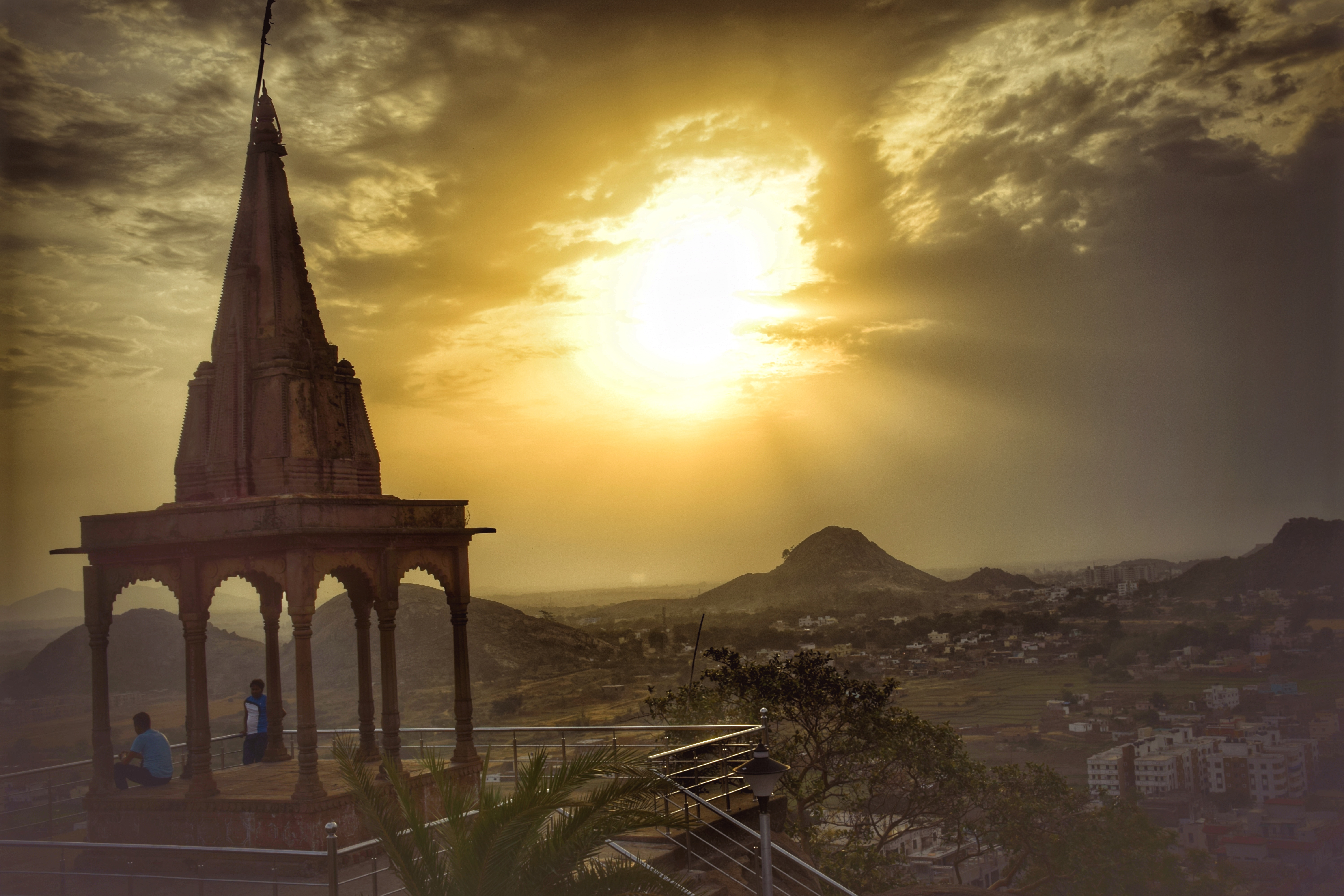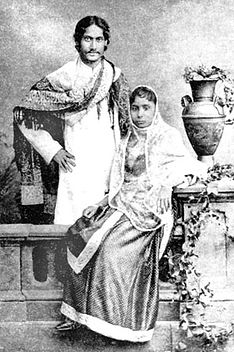|
Tagore Hill
The Tagore Hill also known as Morabadi Hill is situated in Morabadi, Ranchi, Jharkhand. It is around 300 feet high and 4 KM from Albert Ekka Chowk. The hilltop has a long associated history with the revered poet and Nobel Laureate Rabindranath Tagore. Rabindranath Tagore's elder brother Jyotirindranath Tagore settled here in 1912 after the death of his wife, Kadambari Devi. He built a house named Shanti Dham and a monument named Brahma Sthal. He later died in 1925. The Centre of Divyayan and Agararian Vocational Institute along with the Ramakrishna Mission, Ramakrishna Mission Ashram is also located in the premises of this hill. It's a place of attraction for Jharkhand Tourism due to its connection with the great poet Rabindranath Tagore's elder brother. References Hills of Jharkhand Ranchi {{Jharkhand-geo-stub ... [...More Info...] [...Related Items...] OR: [Wikipedia] [Google] [Baidu] |
Tagore Hill Ranchi
Rabindranath Tagore (; bn, রবীন্দ্রনাথ ঠাকুর; 7 May 1861 – 7 August 1941) was a Bengalis, Bengali polymath who worked as a poet, writer, playwright, composer, philosopher, social reformer and painter. He reshaped Bengali literature and Music of Bengal, music as well as Indian art with Contextual Modernism in the late 19th and early 20th centuries. Author of the "profoundly sensitive, fresh and beautiful" poetry of ''Gitanjali'', he became in 1913 the first non-European and the first lyricist to win the 1913 Nobel Prize in Literature, Nobel Prize in Literature. Tagore's poetic songs were viewed as spiritual and mercurial; however, his "elegant prose and magical poetry" remain largely unknown outside Bengal. He was a fellow of the Royal Asiatic Society of Great Britain and Ireland, Royal Asiatic Society. Referred to as "the Bard of Bengal", Tagore was known by sobriquets: Gurudev, Kobiguru, Biswakobi. A Bengali Brahmin from Calcutta wit ... [...More Info...] [...Related Items...] OR: [Wikipedia] [Google] [Baidu] |
Ranchi
Ranchi (, ) is the capital of the Indian state of Jharkhand. Ranchi was the centre of the Jharkhand movement, which called for a separate state for the tribal regions of South Bihar, northern Odisha, western West Bengal and the eastern area of what is present-day Chhattisgarh. The Jharkhand state was formed on 15 November 2000 by carving out the Bihar divisions of Chota Nagpur and Santhal Parganas. Ranchi has been selected as one of the hundred Indian cities to be developed as a smart city under PM Narendra Modi's flagship Smart Cities Mission. During the time of the British Raj, the city was the summer capital of Bihar, because of its cold climate during the winter season. Ranchi is also one of the oldest cities in Jharkhand. Jagannath Temple and Ratu Palace are some sights which witnessed the history of Ranchi. Ranchi is rapidly growing its economy, and certain parks, special economic zones and industrial areas are being developed. Of late, new sectors and modern areas h ... [...More Info...] [...Related Items...] OR: [Wikipedia] [Google] [Baidu] |
Jharkhand
Jharkhand (; ; ) is a state in eastern India. The state shares its border with the states of West Bengal to the east, Chhattisgarh to the west, Uttar Pradesh to the northwest, Bihar to the north and Odisha to the south. It has an area of . It is the 15th largest state by area, and the 14th largest by population. Hindi is the official language of the state. The city of Ranchi is its capital and Dumka its sub-capital. The state is known for its waterfalls, hills and holy places; Baidyanath Dham, Parasnath, Dewri and Rajrappa are major religious sites. The state was formed on 15 November 2000, after carving out what was previously the southern half of Bihar. Jharkhand suffers from what is sometimes termed a resource curse: it accounts for more than 40% of the mineral resources of India, but 39.1% of its population is below the poverty line and 19.6% of children under five years of age are malnourished. Jharkhand is primarily rural, with about 24% of its population living in ... [...More Info...] [...Related Items...] OR: [Wikipedia] [Google] [Baidu] |
Rabindranath Tagore
Rabindranath Tagore (; bn, রবীন্দ্রনাথ ঠাকুর; 7 May 1861 – 7 August 1941) was a Bengali polymath who worked as a poet, writer, playwright, composer, philosopher, social reformer and painter. He reshaped Bengali literature and music as well as Indian art with Contextual Modernism in the late 19th and early 20th centuries. Author of the "profoundly sensitive, fresh and beautiful" poetry of ''Gitanjali'', he became in 1913 the first non-European and the first lyricist to win the Nobel Prize in Literature. Tagore's poetic songs were viewed as spiritual and mercurial; however, his "elegant prose and magical poetry" remain largely unknown outside Bengal. He was a fellow of the Royal Asiatic Society. Referred to as "the Bard of Bengal", Tagore was known by sobriquets: Gurudev, Kobiguru, Biswakobi. A Bengali Brahmin from Calcutta with ancestral gentry roots in Burdwan district* * * and Jessore, Tagore wrote poetry as an eight-yea ... [...More Info...] [...Related Items...] OR: [Wikipedia] [Google] [Baidu] |
Jyotirindranath Tagore
Jyotirindranath Tagore ( bn, জ্যোতিরিন্দ্রনাথ ঠাকুর; 4 May 1849 – 4 March 1925) was a playwright, a musician, an editor and a painter. He played a major role in the flowering of the talents of his younger brother, the first non-European Nobel Prize winner, Rabindranath Tagore.Bandopadhyay, Hiranmay, ''Thakurbarir Katha'', , pp. 106-113, Sishu Sahitya Sansad. Works * Historical plays -''Purubikram'' (1874), ''Sarojini'' (1875), ''Ashrumati'' (Woman in tears, 1879), ''Swapnamayi'' (Lady of Dream, 1882). * Satirical plays - ''Kinchit Jalajog'' (Some Refreshments, 1873), ''Eman Karma Ar Korbo Na'' (I will never do such a thing again 1877), ''Hathath Nabab'' (Suddenly a Ruler, 1884), ''Alik Babu'' (Strange Man, 1900). * Translations - Kalidas's ''Abhijñānaśākuntalam'' (The Recognition of Shakuntala) and ''Malati Madhava'' (Malati and Madhava); Sudrak's ''Mrichhatika'' (Little Clay Cart); Marcus Aurelius’ ''Meditations'', Shakespeare' ... [...More Info...] [...Related Items...] OR: [Wikipedia] [Google] [Baidu] |
Kadambari Devi
Kadambari Devi (5 July 1859 – 21 April 1884) was the wife of Jyotirindranath Tagore and daughter-in-law of Debendranath Tagore. She was ten years younger than her husband, whom she married on 5 July 1868 (২৫শে আষাঢ়, ১২৭৫ বঙ্গাব্দ), at the age of nine. Her husband arranged for her to be educated. She was nearly the same age as her brother-in-law Rabindranath Tagore being only two years older than him. She inspired young Rabindranath in composing many of his poems with her creative feedback and comments. She was also a good friend and playmate. She was one of the women who played a very important part in his life. Her relationship with Tagore was controversial and had elements of tragedy. For reasons that are not known, she committed suicide on 21 April 1884, four months after Rabindranath Tagore married. The Tagore family always remained silent about her suicide. Rumors of family problems having led to her suicide have circulated. A ... [...More Info...] [...Related Items...] OR: [Wikipedia] [Google] [Baidu] |
Ramakrishna Mission
Ramakrishna Mission (RKM) is a Hindu religious and spiritual organisation which forms the core of a worldwide spiritual movement known as the ''Ramakrishna Movement'' or the ''Vedanta Movement''. The mission is named after and inspired by the Indian spiritual Guru Ramakrishna Paramahamsa and founded by Ramakrishna's chief disciple Swami Vivekananda on 1 May 1897. The organisation mainly propagates the Hindu philosophy of Vedanta–Advaita Vedanta and four yogic ideals– Jnana, Bhakti, Karma, and Raja yoga. Apart from religious and spiritual teaching, the organisation carries out extensive educational and philanthropic work in India and abroad. This aspect came to be a feature of many other Hindu movements. The mission bases its work on the principles of karma yoga, the principle of selfless work done with a dedication to God. The Ramakrishna Mission has centres around the world and publishes many important Hindu texts. It is affiliated with the monastic organization. Viveka ... [...More Info...] [...Related Items...] OR: [Wikipedia] [Google] [Baidu] |
Hills Of Jharkhand
A hill is a landform that extends above the surrounding terrain. It often has a distinct summit. Terminology The distinction between a hill and a mountain is unclear and largely subjective, but a hill is universally considered to be not as tall, or as steep as a mountain. Geographers historically regarded mountains as hills greater than above sea level, which formed the basis of the plot of the 1995 film ''The Englishman who Went up a Hill but Came down a Mountain''. In contrast, hillwalkers have tended to regard mountains as peaks above sea level. The ''Oxford English Dictionary'' also suggests a limit of and Whittow states "Some authorities regard eminences above as mountains, those below being referred to as hills." Today, a mountain is usually defined in the UK and Ireland as any summit at least high, while the official UK government's definition of a mountain is a summit of or higher. Some definitions include a topographical prominence requirement, typically or ... [...More Info...] [...Related Items...] OR: [Wikipedia] [Google] [Baidu] |






